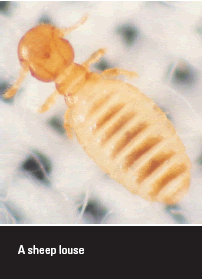|
Avoid introducing diseases like footrot, lice and Ovine Johne’s Disease onto your property and seek professional advice on diagnosis and management.
Footrot
Three broad classifications of footrot are benign, intermediate and virulent. Benign strains that cause mild lameness have little economic or welfare significance. By comparison, highly virulent strains can cause serious lameness, welfare and production losses.
Three important factors that can affect the expression of footrot must be considered when determining what strains are present. Environment is very important; wet, warm conditions allow footrot to express. If conditions are dry, or sheep are run on poor quality pastures or rough hilly country, footrot expression may be less than on good pastures. Secondly, recent footbathing or footrot vaccination can reduce the expression of virulence and finally, British breed sheep tend to be more resistant to footrot than Merinos.
The following table outlines the key features of footrot.
The table summarises the clinical characteristics of different footrot strains.
|
Characteristics
|
Benign
|
Intermediate
|
Virulent
|
|
Severity of disease
|
Mild
|
Moderate
|
Severe
|
|
Ability to heal when dry
|
High
|
Moderate
|
Low
|
|
Lesions
|
Mainly 1–3a
|
Score 2–4
|
Score 3–4
|
|
% sheep with score 4 lesions (ideal conditions)
|
<1%
|
1–3%
|
>3%
|
|
% of lesions > score 3
|
<10% score 3
|
|
> 20% score 3c/4
|
|
Gelatin gel diagnostic test
|
Mainly -ve
|
-/+ve
|
Mainly +ve
|
Footrot regulations vary between states with regard to diagnosis and management. Generally, intermediate and virulent strains are economically significant and worth eradicating. Always seek expert advice if unsure about the cause of lameness in your sheep or uncertain of the footrot status in sheep you are intending to purchase.
Lice
 Lice are diagnosed by visual examination of sheep. Lice are small orange/brown insects, 1‑2 mm long that live on the surface of the skin, often in small colonies. To inspect sheep before purchase or shearing, part the fleece in at least 20 places, particularly along the flanks. Target sheep with evidence of rubbing; the more sheep you inspect the more likely you will pick up low level infections. A new laboratory test has been developed that detects the presence of lice by testing wool grease in shearing cutters. In cases where wool rubbing is seen, but no lice can be found, the lice detection test can be used to check whether lice are present. For more information see: http://www.liceboss.com.au/. Lice are diagnosed by visual examination of sheep. Lice are small orange/brown insects, 1‑2 mm long that live on the surface of the skin, often in small colonies. To inspect sheep before purchase or shearing, part the fleece in at least 20 places, particularly along the flanks. Target sheep with evidence of rubbing; the more sheep you inspect the more likely you will pick up low level infections. A new laboratory test has been developed that detects the presence of lice by testing wool grease in shearing cutters. In cases where wool rubbing is seen, but no lice can be found, the lice detection test can be used to check whether lice are present. For more information see: http://www.liceboss.com.au/.
Ovine Johne’s Disease (OJD)
OJD is a chronic wasting disease. Affected sheep become emaciated usually over a period of 3 months, often scouring. Once they develop clinical signs, the disease is fatal. It usually affects sheep more than 2 years old. Death rates range from less than 1% to more than 10% in severely affected flocks. Diagnosis can be made by post-mortem examination of affected sheep. Sheep with advanced OJD show characteristic signs of thickened gut wall and swollen lymph nodes. Infection is confirmed by microscopic examination of gut sections that show presence of the OJD bacteria, using special staining techniques.
Faecal culture is the most common flock test to detect the presence of OJD bacteria.
Individual samples can be cultured or faecal samples collected from 50 sheep, combined and cultured over a period of at least 12 weeks to grow the bacteria. Further testing (polymerase chain reaction – PCR) is used to confirm the presence of OJD bacteria and determine if the strain is a sheep or cattle strain. Blood testing can be done, but it has been superseded as a test due to its poor sensitivity and cost.
|